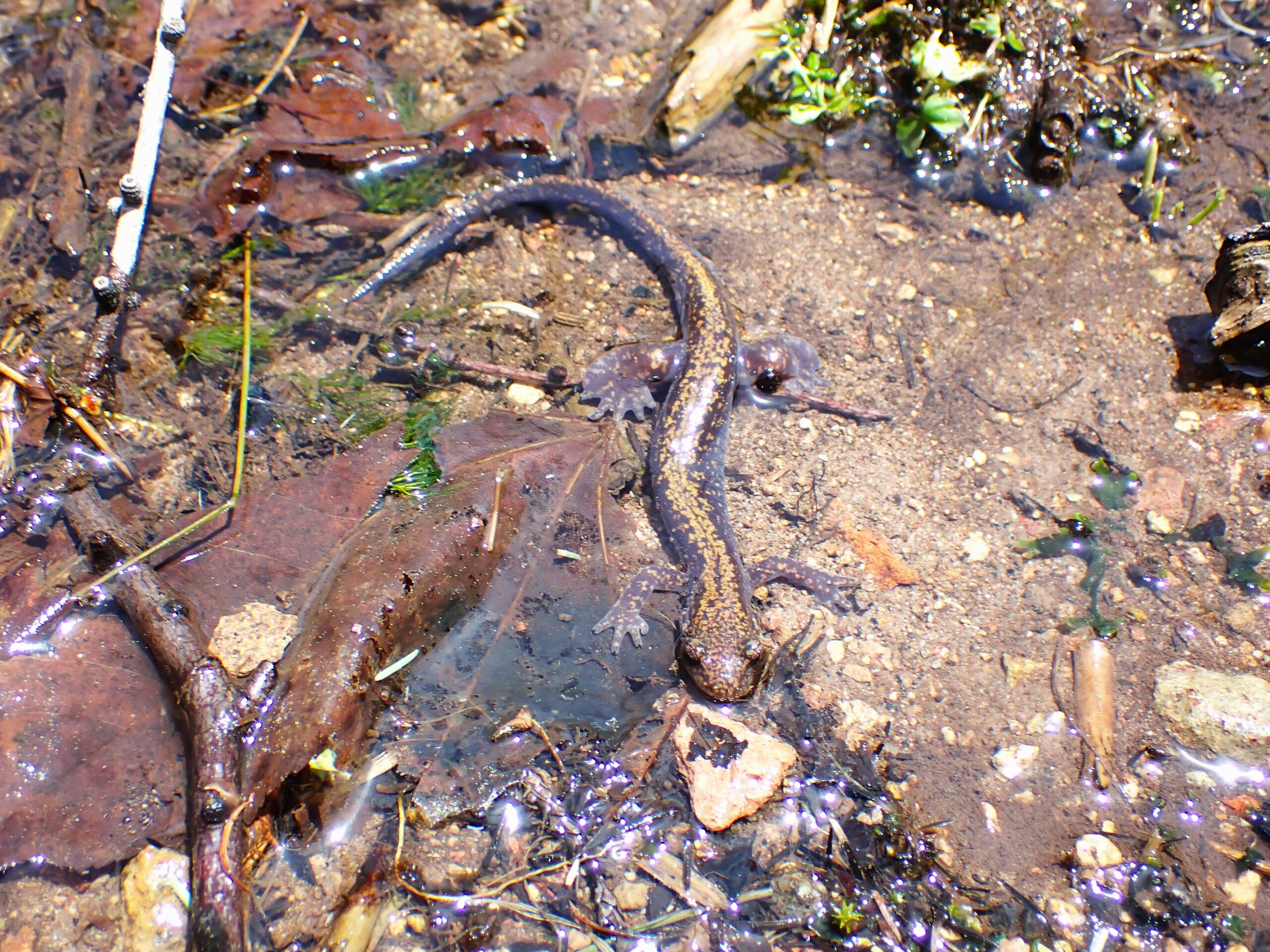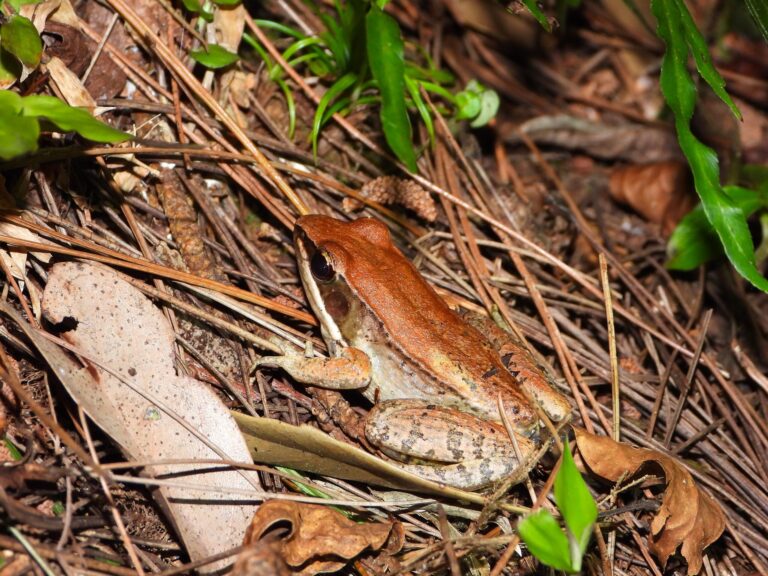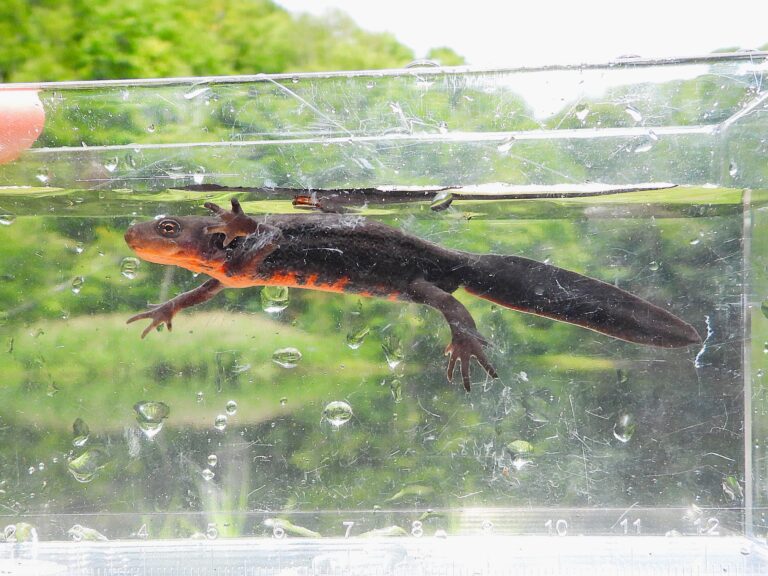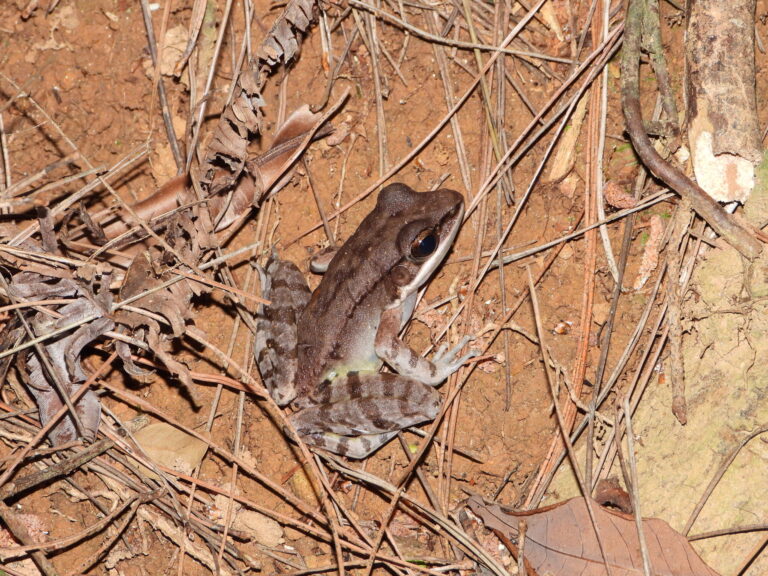Japanese Clawed Salamander (Onychodactylus japonicus) – Wildlife of Japan
Introduction
The Japanese Clawed Salamander, locally known as the “Hakone Salamander,” is a lungless amphibian endemic to Japan. It lives in cold mountain streams and is known for its long slender body and small black claws that appear during the breeding season—a unique feature of the genus Onychodactylus.
Appearance
This species has a slender body, a long tail, and large eyes. The coloration is dark brown to purplish-black, often with an orange or reddish dorsal stripe or small flecks visible in many individuals. Adults have no functional lungs and breathe entirely through their skin. During the breeding season, both adults and larvae develop tiny black claws, and males form keratinized pads on their hands and feet.
Habitat & Distribution
The Japanese Clawed Salamander inhabits cool, shaded mountain streams in forested regions. Its range is restricted to Honshu—mainly the mountains south of a line from Kitakata (Fukushima) to Daigo (Ibaraki). Earlier records from Shikoku were later reassigned to other species after taxonomic revisions. The type locality is Hakone, Kanagawa Prefecture.
Behavior
It is primarily nocturnal, hiding under stones and fallen logs during the day and becoming active at night. Its long, flexible tail and slender body are well adapted to life in fast-flowing, rocky headwater streams.
Diet
Adults feed on small invertebrates such as insects, spiders, and millipedes, while larvae prey on aquatic insects like mayfly and caddisfly larvae.
Reproduction
This species breeds in flowing water. Females lay a pair of egg sacs deep within streambed crevices or in subsurface spring water—one sac from each oviduct. Each sac usually contains 6–18 eggs (average about 11), totaling roughly 15–33 eggs per clutch. Fertilization is external. Breeding mainly occurs in spring, though some populations, such as those in Ishikawa Prefecture, also breed in autumn. The larvae take 2–3 years to metamorphose.
Conservation
Globally, the species is listed as Least Concern by the IUCN, but local populations have declined due to forest road construction, sedimentation, check dams, and drying of headwaters. In Hakone Town, it is protected as a Natural Monument. Because it depends on cool, moist microclimates, it is considered vulnerable to climate change. Observers should always replace any stones moved during observation and avoid disturbing breeding habitats.
Author’s Impression
Larvae can sometimes be seen by gently turning over stones in mountain streams, but adults usually remain hidden beneath rocks or within the water, making encounters extremely rare. Finding one truly feels like a stroke of luck.








